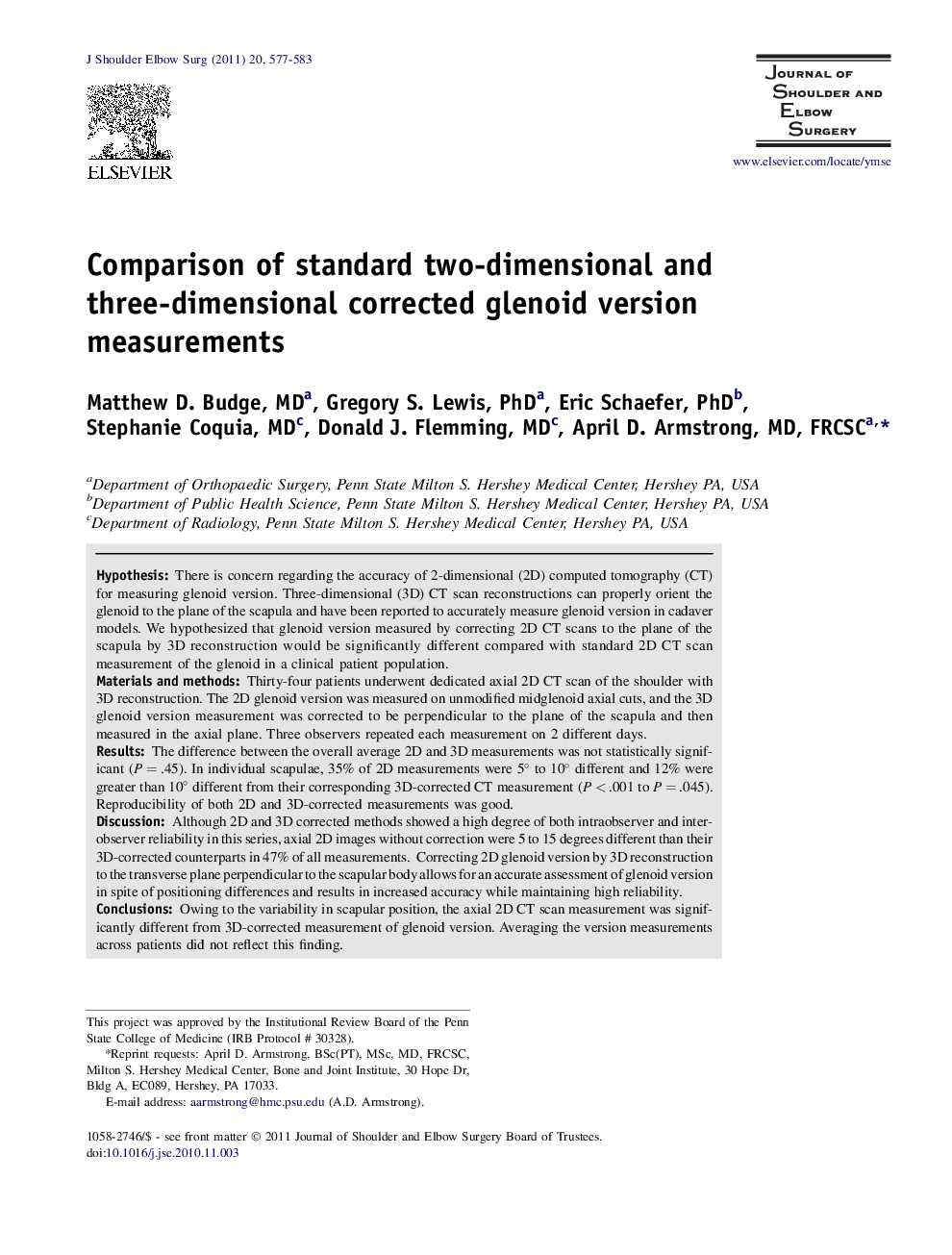| Article ID | Journal | Published Year | Pages | File Type |
|---|---|---|---|---|
| 4074531 | Journal of Shoulder and Elbow Surgery | 2011 | 7 Pages |
HypothesisThere is concern regarding the accuracy of 2-dimensional (2D) computed tomography (CT) for measuring glenoid version. Three-dimensional (3D) CT scan reconstructions can properly orient the glenoid to the plane of the scapula and have been reported to accurately measure glenoid version in cadaver models. We hypothesized that glenoid version measured by correcting 2D CT scans to the plane of the scapula by 3D reconstruction would be significantly different compared with standard 2D CT scan measurement of the glenoid in a clinical patient population.Materials and methodsThirty-four patients underwent dedicated axial 2D CT scan of the shoulder with 3D reconstruction. The 2D glenoid version was measured on unmodified midglenoid axial cuts, and the 3D glenoid version measurement was corrected to be perpendicular to the plane of the scapula and then measured in the axial plane. Three observers repeated each measurement on 2 different days.ResultsThe difference between the overall average 2D and 3D measurements was not statistically significant (P = .45). In individual scapulae, 35% of 2D measurements were 5° to 10° different and 12% were greater than 10° different from their corresponding 3D-corrected CT measurement (P < .001 to P = .045). Reproducibility of both 2D and 3D-corrected measurements was good.DiscussionAlthough 2D and 3D corrected methods showed a high degree of both intraobserver and interobserver reliability in this series, axial 2D images without correction were 5 to 15 degrees different than their 3D-corrected counterparts in 47% of all measurements. Correcting 2D glenoid version by 3D reconstruction to the transverse plane perpendicular to the scapular body allows for an accurate assessment of glenoid version in spite of positioning differences and results in increased accuracy while maintaining high reliability.ConclusionsOwing to the variability in scapular position, the axial 2D CT scan measurement was significantly different from 3D-corrected measurement of glenoid version. Averaging the version measurements across patients did not reflect this finding.
